The cool, calm rise of architect and designer Vincent Van Duysen
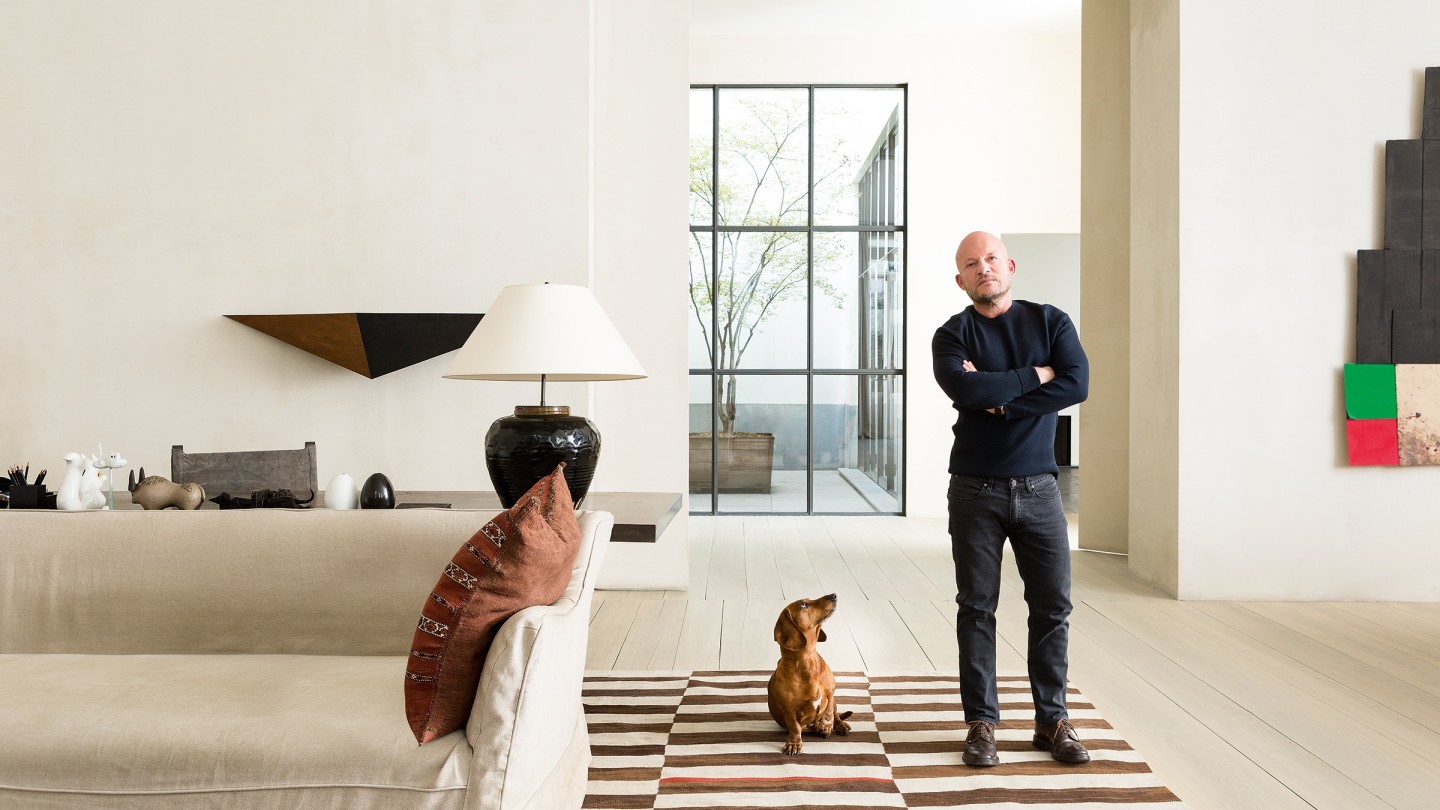
Roula Khalaf, Editor of the FT, selects her favourite stories in this weekly newsletter.
Vincent Van Duysen can talk. The architect’s famed minimal interiors may be the ultimate in serenity, the man himself may appear calm and poised, but verbally he’s a maximalist. No detail of his work is too small for him to expand upon in intricate detail. Indeed, so loquacious is he that his mother hoped he would become a lawyer, a career that ran in her family. But his love for the arts won through and the legal profession’s loss has been design and architecture’s gain.
Antwerp-based Van Duysen – bespectacled when I meet him and clad in “architect’s black” – came to the notice of the design world over a quarter of a century ago. Back then Ilse Crawford was at the helm of the interiors magazine Elle Decoration, which championed neutrals, white orchids and zen-like minimalism. Van Duysen – alongside the architectural designer John Pawson – was at the forefront of the style. He began to create beautifully pared-back homes in his native Belgium, including his own. In his early days, says Crawford, Van Duysen stood out for his ability to “integrate architecture and interior design. So often these are done separately.”
It’s precisely this ability that spurred the Italian interior design powerhouse Molteni Group to appoint Van Duysen as creative director of its Molteni&C and Dada brands last April. Cassina and Driade had already led the way, picking design heavyweights Patricia Urquiola and David Chipperfield to take the helm at their own design ships. Their intention? To differentiate themselves from the rest of the Italian market, and to add an extra layer of global sophistication to their brands by choosing an architect of international renown. Molteni&C wasted little time in following suit.
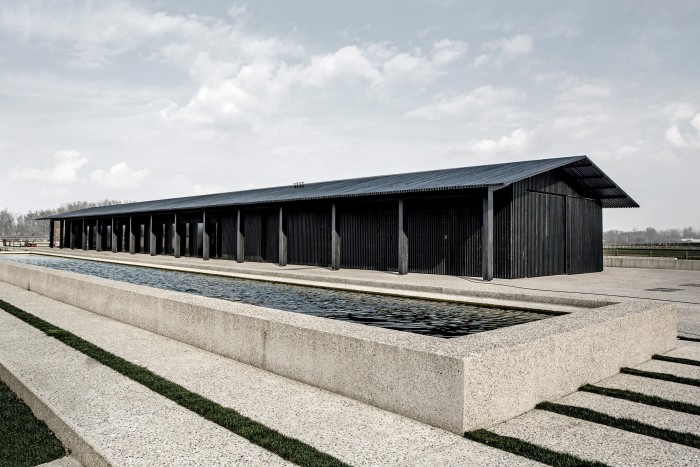
Van Duysen’s star is certainly riding high. Last year he won the Design of the Year prize at Belgium’s Biennale Interieur, as well as the Flemish Culture Award for Design 2015. His Portofino outdoor furniture collection for Paola Lenti (from £1,560) – a classic contemporary take on the idea of deck and campaign chairs – won the Good Design Award 2016. He has just completed his first major yacht design, the Husky Explorer RH3, a cool revamp of a much-travelled expedition yacht. His TR Residence (three black slatted wooden “barns”) won the ARC15 Architecture Award. Plus he has a host of new products out, including two separate lighting collections for Flos and additions to the furniture collection for Paola Lenti (larger seating, from £3,096, armchair, as well as stools, from £1,560, that transform into side tables with the addition of a tray, £1,068). There’s a 3D tile collection for Mutina and new ranges for Molteni&C coming later this year.
The reason he is so in demand – despite an almost wholesale rejection of minimalism over the past decade – is, ventures Paola Lenti, that his work “synthesises elegance and cleanliness, so the products are destined to remain relevant and become new contemporary classics”. The subtext being, design companies are looking for classics rather than outré design.
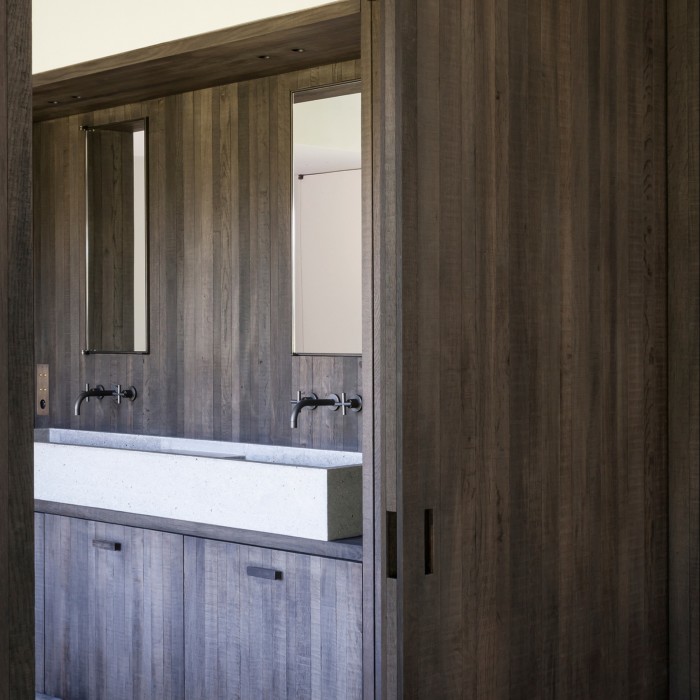
For Giulia Molteni, part of the third generation of Moltenis that now runs the company, his work combines “a strong north European imprint – a minimalist rigour – with a Mediterranean flavour and a real passion for Italy”. This mix meant the Molteni family had been fans of his work for some time. Van Duysen was in discussions to come on board years ago, but, he says, “It wasn’t the right moment. I was too busy with my practice.”
Then his studio was asked to complete an office project in Riyadh. The client wanted Italian-made furniture to fill the space, and the Molteni Group won the contract. The success of the joint project led to further discussions. “And I couldn’t resist,” says the architect. “Not least because they are incredibly committed and passionate about research into technologies that are only perceived when you touch the products. They have an incredible knowledge of craftsmanship too. They’re doers. We share the same work ethic.”
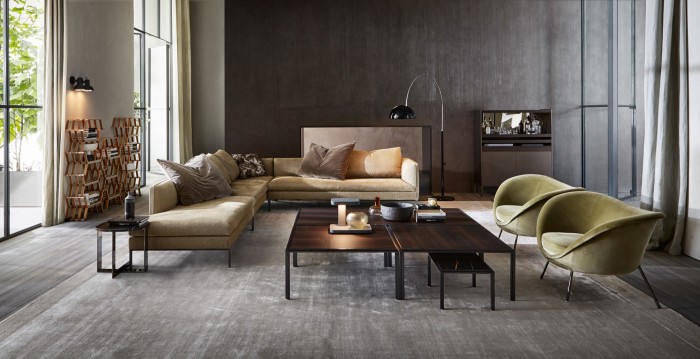
Their first collaboration was on a series of Gliss Master walk-in wardrobes (from £3,000), constructed from myriad different bespoke materials (from eucalyptus and graphite oak to caramel lacquers and pearl etched glass), followed by the luxuriously soft upholstered Ribbon bed (from £4,646), with its subtle ribbon edging. Then came the VVD kitchen for Dada (from £40,000), Molteni Group’s kitchen brand; the Paul sofa (£13,500) on tiny legs that seems to float; and a show booth at the IMM in Cologne in 2016. The booth – designed as a smart minimalist home interior, complete with a secret garden in the middle – went down a storm.
Van Duysen says that Molteni&C had always been his favourite of the Italian big names. “I remember it as the most beautiful in Italy. It was always very fine, subtle, not too forced, kind of understated. Plus it had a lot of designs by architects rather than designers, and that spoke to me.”
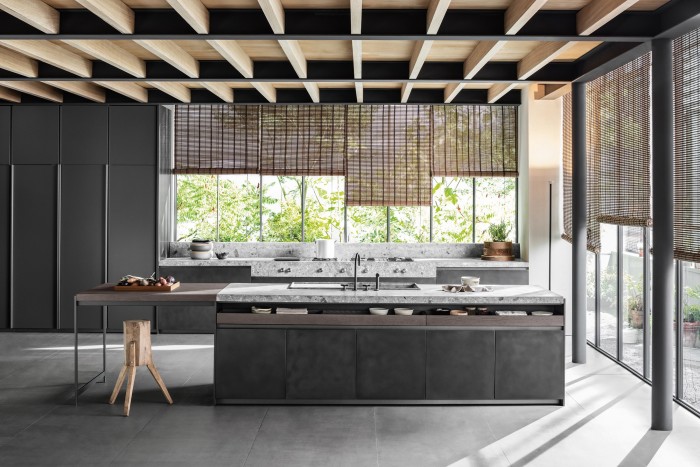
This personal link for Van Duysen is important. An Italian thread runs through the entirety of his working life. In 1986, after graduating from the Higher Institute of Architecture Sint-Lucas in Ghent, the young Van Duysen travelled to Milan to work with the designer Aldo Cibic. Cibic was then in partnership with Ettore Sottsass, who had founded the influential avant-garde Memphis Group. Van Duysen was seduced by the crazy, hypercoloured aesthetic of postmodernism that was the pinnacle of cutting-edge style at the time. But it wasn’t until he came home at the end of the 1980s that he realised he needed a visual break from the style. “I felt saturated with all the information and colours that were part of postmodernism.” Flemish influences took over. “All the natural materials, raw materials, colours derived from the nature around us, very simple tones, the fact that historically we are great weavers and producers of carpets and amazing fabrics were part of a 360-degree turn in my thinking. I knew I needed to create domestic environments that were actually calming.”
While the style of his work was visually very different from what he had seen in Italy, it remained imbued at a deeper level with the lessons he had learnt in his time there. Part of this was an appreciation of the fact that “Sottsass and his contemporaries were informed by ethnic and Indian and local cultures, and they were working around simple archetypical forms to which they added unexpected details and expressive materials and colours. At their core the forms were purist and simple.” The foundations of Van Duysen’s global-domestic-Flemish-Italian style were in place.
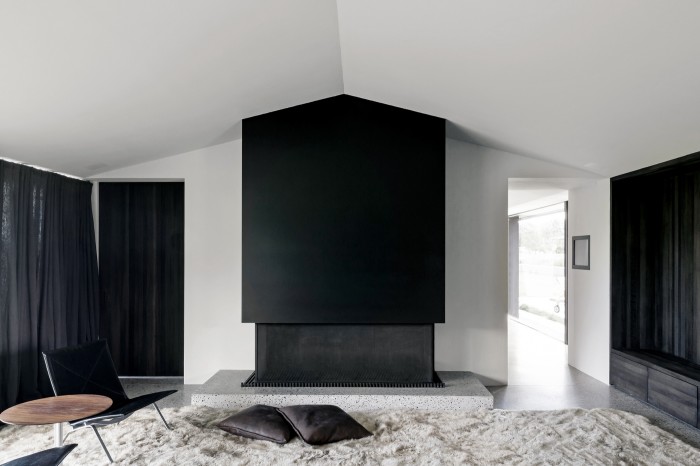
The first international shop interior that Van Duysen designed was in Italy, for MaxMara in Milan. He has also worked with the Rome branch of La Rinascente department store for the past few years. “I feel half-Italian. I speak Italian and I’m sure there’s some connection in my history,” he says. It’s a connection that the Molteni family feels also. “There was a particular ‘click’ with my father Carlo, first of all,” says Giulia Molteni. Van Duysen understands, she says, “creating a conversation about Italian beauty – with an innovative twist”.
It might seem like a brave move to bring on board an arch-minimalist at a time when minimalism has given way to the more flamboyant maximalist style of designers such as Marcel Wanders and Jaime Hayón. But, says Giulia Molteni, there is a material sophistication to Van Duysen’s work that the company desires. What’s more, there’s a humanity to his paring down of extraneous detail to the core basics that resonates with many buyers today who are trying to reduce the excess “noise” in their environments.
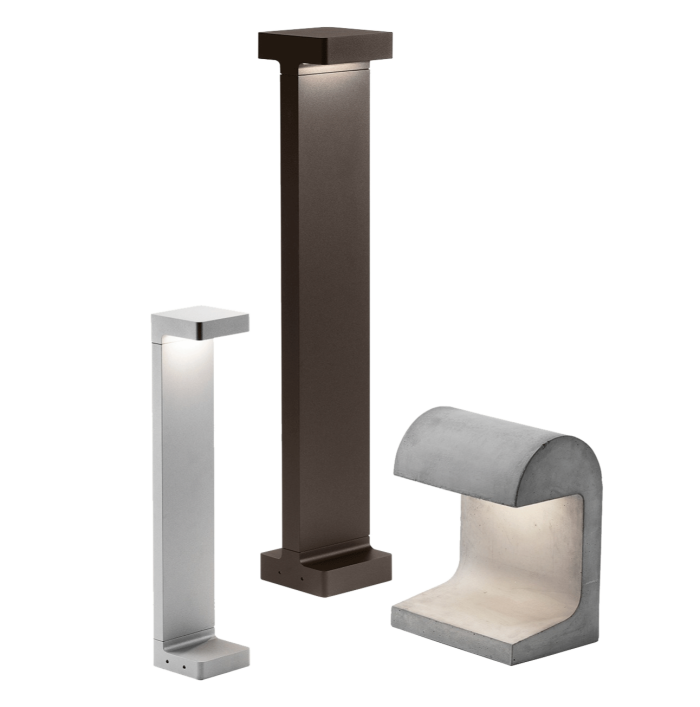
Quiet is beautiful, he reasons. “I’m not part of this spectacle effect that is happening in architecture; this moment of ostentation in buildings. I feel a lot of architects have forgotten about the interiors or don’t feel connected to them. I hope this will change. I think it is changing.” Similarly, over the past few years he has noticed “shocking, mediocre, generic or even ugly furniture at the Salone furniture fair in Milan that is visually disturbing”.
For him, “architecture was always about a broader context that is not just about building and constructing. I see architecture as not only creating spaces, but also giving space to the products that belong in them. I’m not a city planner. I’m much more of a domestic, face-to‑face kind of person. I design for people.”
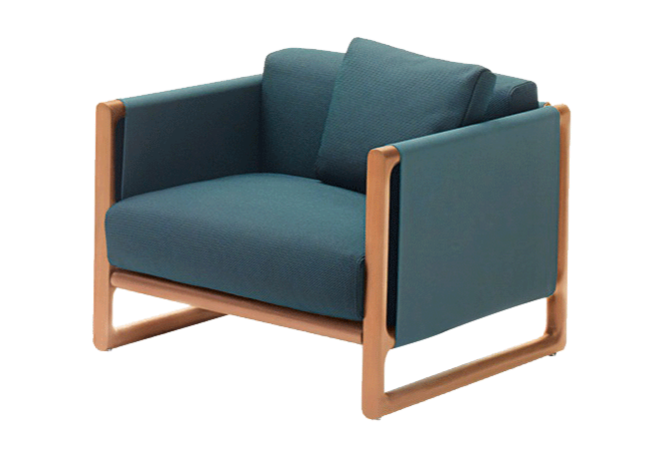
His designs are appealing to a new generation that appreciates the warm, tactile minimalism that characterises his work. Standout pieces include his 2012 Theo “suspended” armchairs for B&B Italia (£2,509); lamps for Flos (from £446), made of concrete, oxidised bronze, cast iron or coated aluminium; and Icona taps for Fantini (price on request), curved and elegant in matte gunmetal or brushed copper. His furniture for Paola Lenti – including a fetching lavastone outdoor table (from £14,928) with rounded trestle supports – is anti-trend and comes in desirable muted hues.
Van Duysen’s focus on the human factor in architecture and design was inspired by a group of classically trained interior designers with whom he worked for four years on his return to Belgium. “These were the people who were entering into people’s homes and hearts. They understood what worked and what didn’t, and they taught me how people were really living.”
While his architectural approach hasn’t changed, the materials with which he works have, so that “there are enough subtle variations to make each home unique”. New material accents include Belgian bluestone as a bath surround and reclaimed oak boards from a 17th-century cloister in the Pyrenees for flooring (both in his own home – a historic Antwerp townhouse). At Molteni&C he has been exploring the use of extra glass and materials such as dark bronze within the Gliss Master wardrobes, plus a plaster finish that perfectly suits his own domestic projects.
Such innovations and experimentation put paid to any accusations of boring minimalism. And, indeed, time has changed the very concept of minimalism. Ilse Crawford says that the way the architect’s work has evolved since the 1990s is in line with a new concept of pared-back luxe. This time around, minimalism is about materials: “It is less abstract and more physical,” she says. “He has always had a good understanding of materiality and its relation to the human body. But the more of his work we see, the more singular it is in the way he integrates these aspects of his designs.”
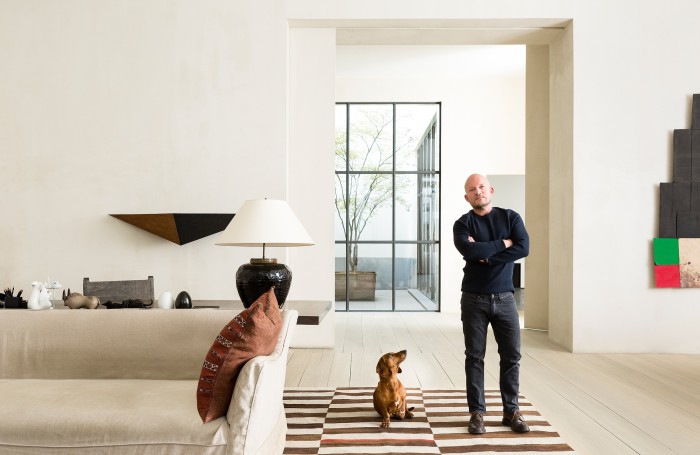
But what about the man himself? His hobbies are going to the gym, photography and collecting contemporary art, including early works by the sculptor Thomas Houseago and photographer Dirk Braeckman. He is most animated when talking about a new artwork by photographer Wolfgang Tillmans that he is about to have delivered. He describes the 1993 photographic collage as a “nature morte that has all the roughness, softness, happiness and sadness there could possibly be in one artwork at once. It was just what was missing from my collection.”
You then realise two things. That the self-confessed “aesthete” Van Duysen really isn’t just about the surface, but the emotion underneath. And that he truly is wedded to his work. “I love beautiful things. Architecture for me is about beauty.” He sounds a little apologetic when he confesses, “My main hobby really is my profession.”
Atrium, 28 Leonard Street, London EC2 (020-7681 9933; atrium.ltd.uk). B&B Italia, 250 Brompton Road, London SW3 (020-7591 8111; bebitalia.com). Dada, 99 Shaftesbury Avenue, London WC2 (020-7631 2345; dada-kitchens.com). Fantini, fantini.it. Flos, flos.com and see Atrium. The Modern Garden Company, 01279-653 200; moderngardencompany.com. Molteni&C, 99 Shaftesbury Avenue, London WC2 (020-7631 2345; molteni.it). Mutina, mutina.it. Paola Lenti, paolalenti.it and see The Modern Garden Company. Vincent Van Duysen, +323-205 9190; vincentvanduysen.com.
Comments